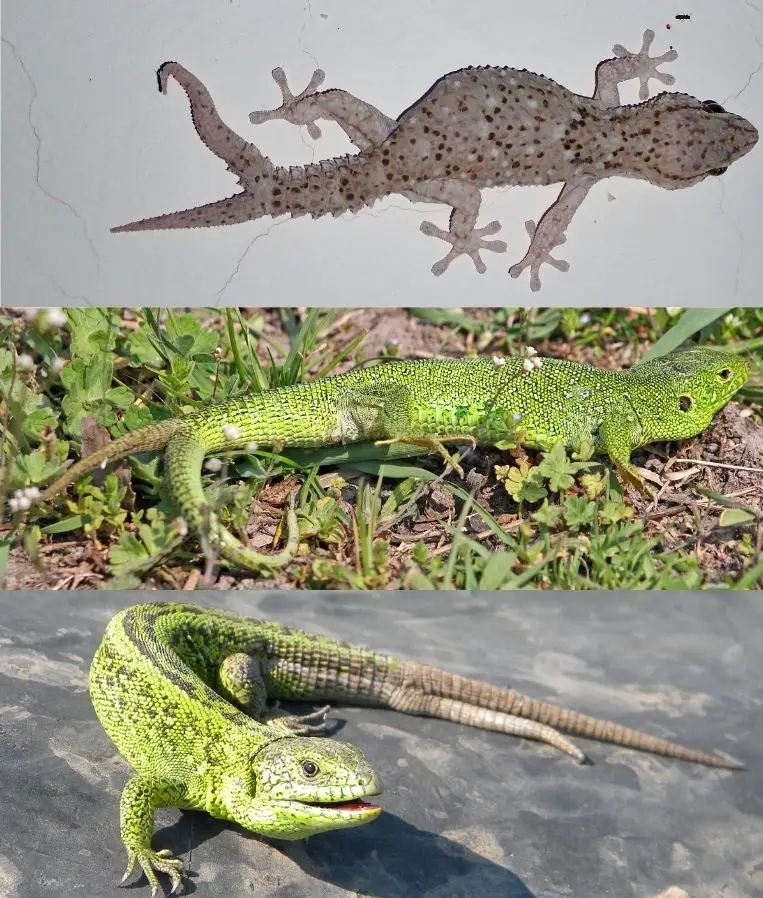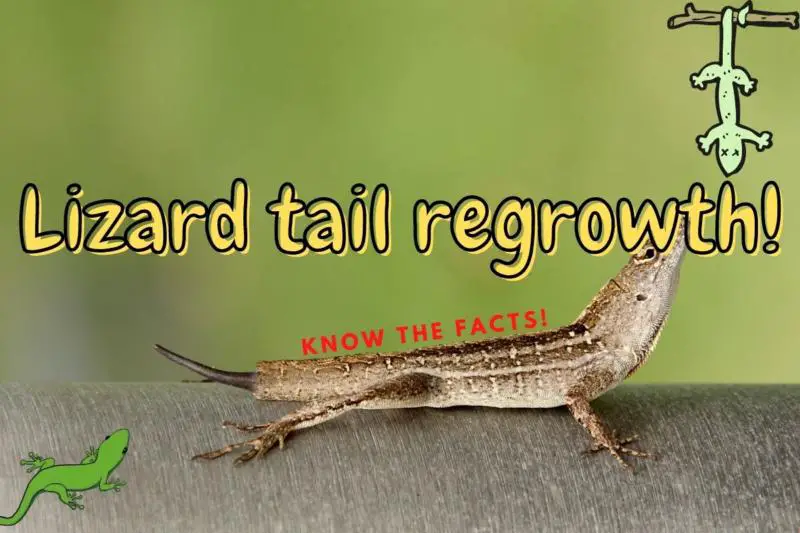Autotomy is the purposeful loss of a body part found throughout the animal kingdom, but is most common in invertebrates. One of the more famous examples of this is lizards losing, or dropping, their tails as a strategy to avoid predators.
The lizards tail is an advanced structure that is designed to be lost, but will never really regenerate to the original standard.
Although many factors play a role, we can estimate how many times a lizard can maximally lose its tail. If we assume that a (fully grown) lizard lives around 4 years on average in the wild, and it takes around four months for a tail to regrow, the maximum number of times the lizard can regrow its tail will be 12 times.
While a lizard could theoretically regrow its tail 12 times, it really depends on factors such as the lizard species, age, its environment and its health. And because lizards are disadvantaged without a tail, lizards usually don’t survive to regrow their tails multiple times.
Specifically in lizards, this is known as caudal autotomy, which is the self-amputation of the tail. Not all lizards have this adaptation, but species include the Green Anole lizard, most salamander species, geckos, and iguanas.
The degree of stress or predation required to drop a tail varies and depends on the species of lizard.
For some, the tail only drops under extreme duress, like an attack by a predator, requiring a predator to pull on the tail for it to detach.
Other lizards can drop their tail without ever being touched, since all they need to drop their tail is to sense danger.
Some species will drop their tail after only a slight tug or bump. While other lizards, like the Eastern Collared Lizard (Crotaphytus collaris) have the ability to drop their tails, but rarely do.

Lizards can also drop the tail if it has been bitten by a venomous snake, which prevents the venom from spreading to the rest of the body.
However, the tail has a unique structure that allows the lizard to “cut” it of when needed because lizards have evolved to have fracture planes throughout the length of the tail.
These fracture planes are areas of weakness either between or in the middle of the vertebrae of the tail.
The lizard is able to drop its tail by contracting muscles around the fracture planes, which severs the body’s connection with the muscle, skin, nerves, blood supply and bone in the tail.
Once the tail has been dropped, it will writhe and wiggle anywhere from several seconds and up to 30 minutes.
This movement is indented to keep the predator distracted to give the lizard enough time to get to safety.
It can be common for body parts capable of caudal autotomy to be brightly coloured. This is helpful, as the predator may be more likely to attack the lizard on the more brightly coloured area of the body, allowing them to drop their tail to get away.
How do lizards regenerate their tails?
Scientists are still working to understand the exact mechanisms for how lizards and other creatures with this ability are able to regrow limbs.
The tails are regrown as long tubes of cartilage and muscle, but the tail bones are not able regrow.
Scientists have identified at least 326 genes in specific spots in the tail are activated during regeneration, indicating that lizard DNA has a ‘genetic recipe’ that they use to regenerate their tails.
What biologists do know is that lizards are capable of dedifferentiating cells. This means that existing cells at the point of the tail break can change what type of cell they are.
They revert to a more primitive cell, similar to a human stem cell, which is capable of being ‘programmed’ to become whatever cells are necessary to build the new tail.
This could be cartilage, muscle, or skin cells. The regrown tail doesn’t regrow new nerve cells, but existing nerve cells can extend longer to reach the regenerated tail.
It is common to find partially regenerated tails, or lizards with no tails at all. The lizard’s ability to successfully regrow their tail depends on several factors, including specific species, overall heath, nutrients, and nerve damage.
For example, a lizard with nerve damage at the base of the tail is not able to regenerate the tail.
Can lizards lose their tails more than once?
Yes, but it depends on the specific species of lizard.
Most lizards can lose and regrow their tail several times, but there is usually an upper limit where after so many times lizards will no longer be able to regrow their tail.
Sometimes the regeneration process can go haywire, and lizards can regrow multiple tails at once. This often happens when the regrowing tail is damaged at some point in the growing process, leading to the emergence of an extra tail from the wound.

Up to 6 tails have been found on a single lizard from some dysfunction in the regeneration process.
A Crested Gecko is one lizard that is able to lose their tail, but are unable to regrow a new one.
Does it hurt when lizards lose their tails?
Most sources say that lizards aren’t hurt when dropping their tails, however, they may experience some negative impacts.
Light bleeding when the tail drops can be normal, however, heavy bleeding is not likely to happen and the lizard does normally not suffer from the incident.
Heavy bleeding can be a sign that the lizard’s body was not prepared to lose the tail, the tail didn’t detach properly, or detached in the incorrect spot. In this case, the lizard could bleed to death and will suffer.
Losing the tail effects the lizard’s ability to run quickly and balance, the regrown tail can be shorter and a different colour than the original, which can impact the lizard’s social standing and attractiveness to the opposite sex.
For example, male lizards with no tails are less likely to be able to find a mate and adolescent lizards without tails will have a harder time establishing a home territory.
How long does it take for a lizard tail to grow back?
Tail regeneration is a complex process that can take anywhere from 50 days to a year for a lizard to regrow a functional tail. It involves wound healing, altered investment of resources, and tissue differentiation.
How long it takes for a lizard to regrow their tail depends mostly on the size of the lizard and the length of tail needed to be regrown.
For example, the small Green Anole takes up to 60 days to regrow their 10-centimetre tail, whereas the iguana may take up to a year or longer to regrow their tails, which can be 51-76 centimetres.

The regrown tail will differ from the original tail in terms of size, shape, and function, and is made of cartilage instead of bone.
Do Gargoyle and crested Geckos grow their tails back?
Geckos are popular pets and especially the crested gecko is cherished by American reptile lovers.
Although slightly more expensive compared to the crested gecko, gargoyle geckos are also wonderful pets with more interesting colors and a friendly nature.
However, there is an important difference between the crested gecko and the gargoyle gecko when it comes to tail loss – only the gargoyle gecko can regenerate its tails and it does it really well!
Unlike many other lizards and especially geckos, the Gargoyle Gecko is able to regenerate an almost identical tail to the original tail in a matter of months.
This is quite unique for geckos and for most geckos, the new tail is most often visibly different and easily identifiable. It is often shorter, a different colour, has a different pattern, and has different scales. But the tail is different on the inside too.
How is the new tail different from the original one?
As discussed previously, the new tail is composed of cartilage and muscle, with no bones. But the muscle itself is quite different in the new tail.
The original tail is composed of short, fast-twitch fibres, while the new tail is composed of longer, slow-twitch muscles.
Typically, slow-twitch muscle supports long distance endurance activities, whereas fast-twitch muscles aide in agility and short, fast movements. This change in the type of tail muscle makes the regenerated tail less useful than the original tail, which makes the new tail’s primary function to drop off and distract predators.
Conclusion
In conclusion, lizards can drop and regrow their tails several times, but there is no specific ‘number’ of times this is possible.
It depends on the lizards’ species and overall health. While this is a useful adaptation to survive predation, the lizards that drop their tails have to survive the many disadvantages of being tail-less or having a regenerated tail.
Sources
https://pubmed.ncbi.nlm.nih.gov/31240822/
https://pubmed.ncbi.nlm.nih.gov/17068798/
https://pubmed.ncbi.nlm.nih.gov/24241059/
https://academic.oup.com/cz/article/66/4/373/5688747
https://www.livescience.com/lizard-multiple-tails-regeneration.html\
https://www.huffpost.com/entry/lizards-regrow-tails-humans_n_5694899




